Abstract
Two data structures designated Fragment and Construct are described. The Fragment data structure defines a continuous nucleic acid sequence from a unique genetic origin. The Construct defines a continuous sequence composed of sequences from multiple genetic origins. These data structures are manipulated by a set of software tools to simulate the construction of mosaic recombinant DNA molecules. They are also used as an interface between sequence data banks and analytical programs.
Full text
PDF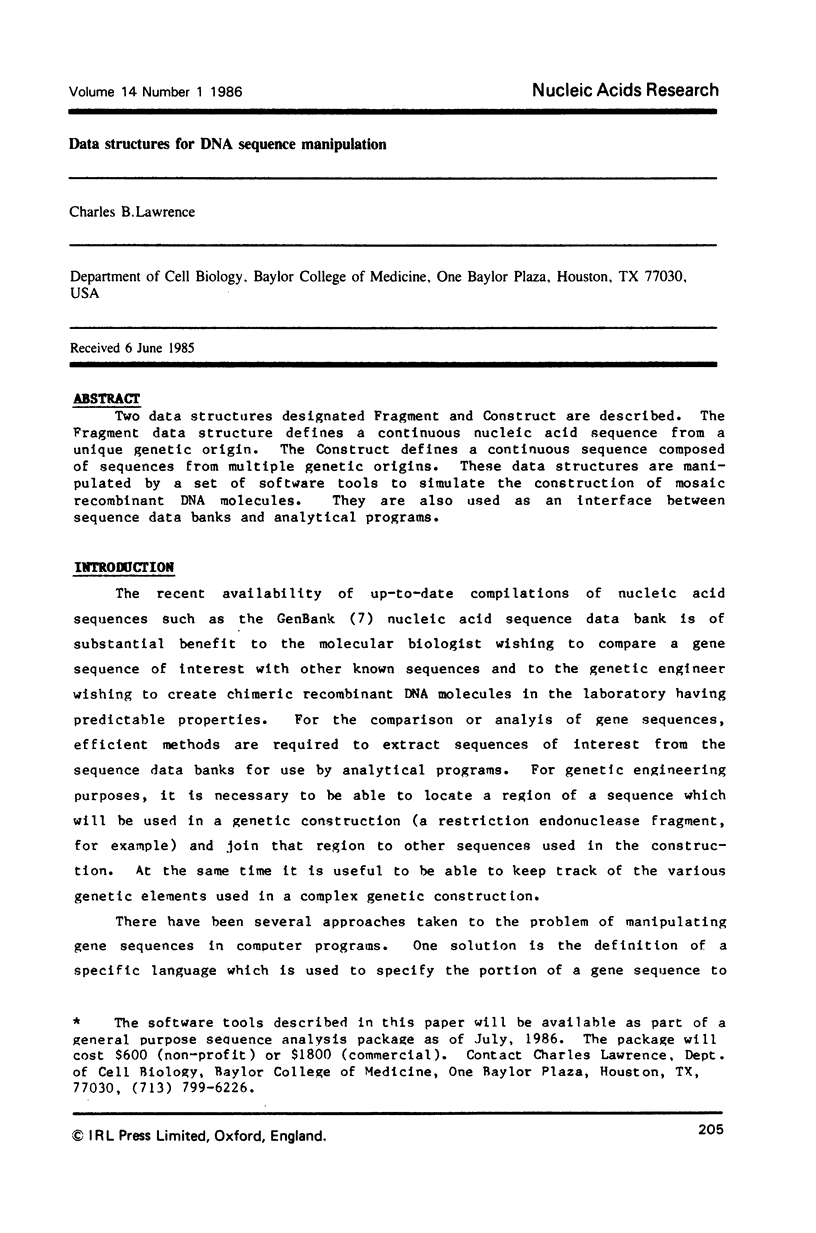
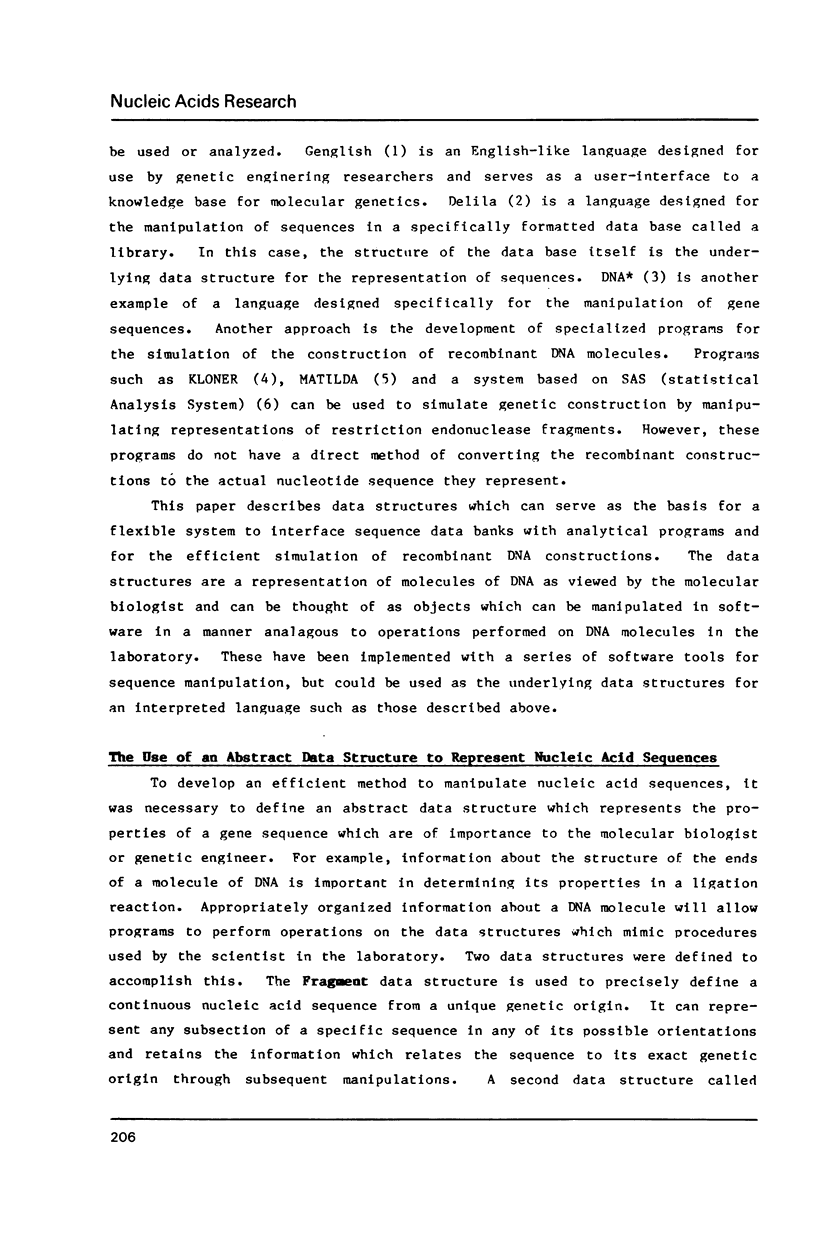
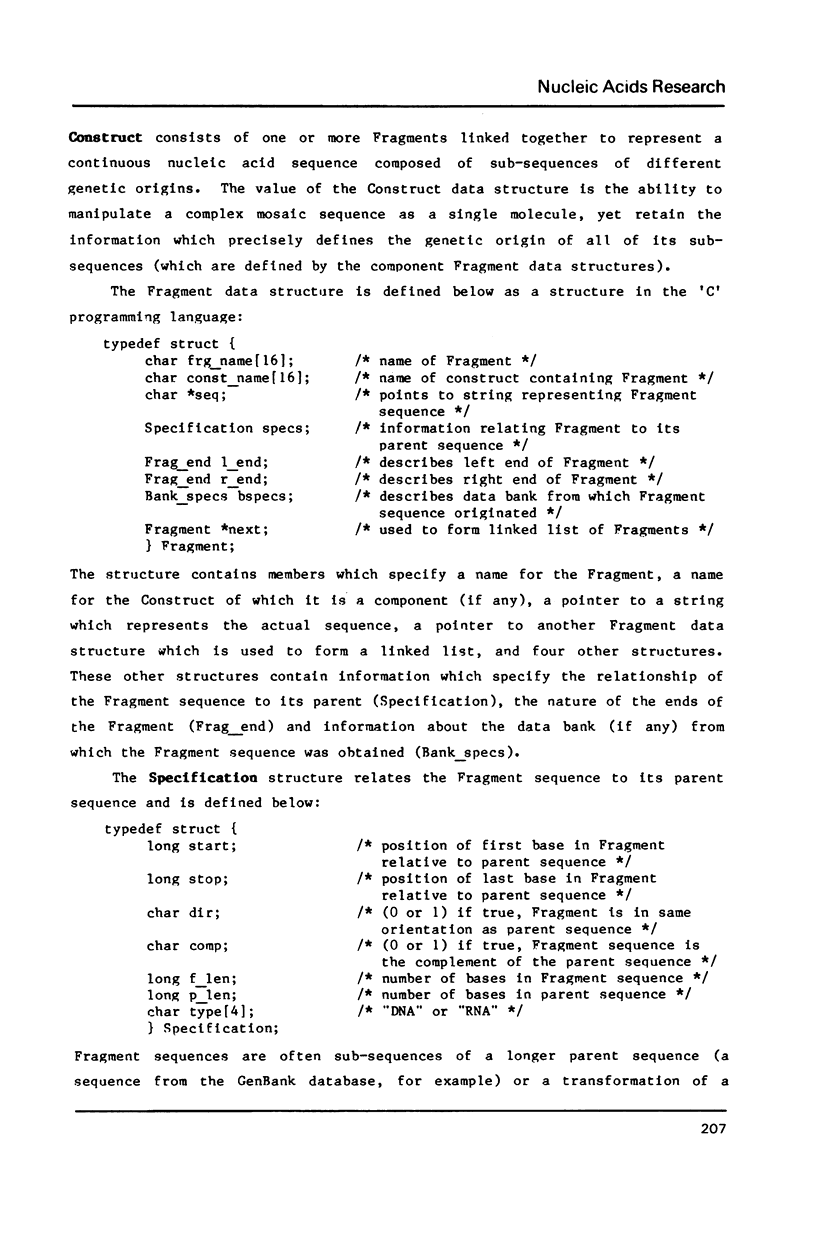
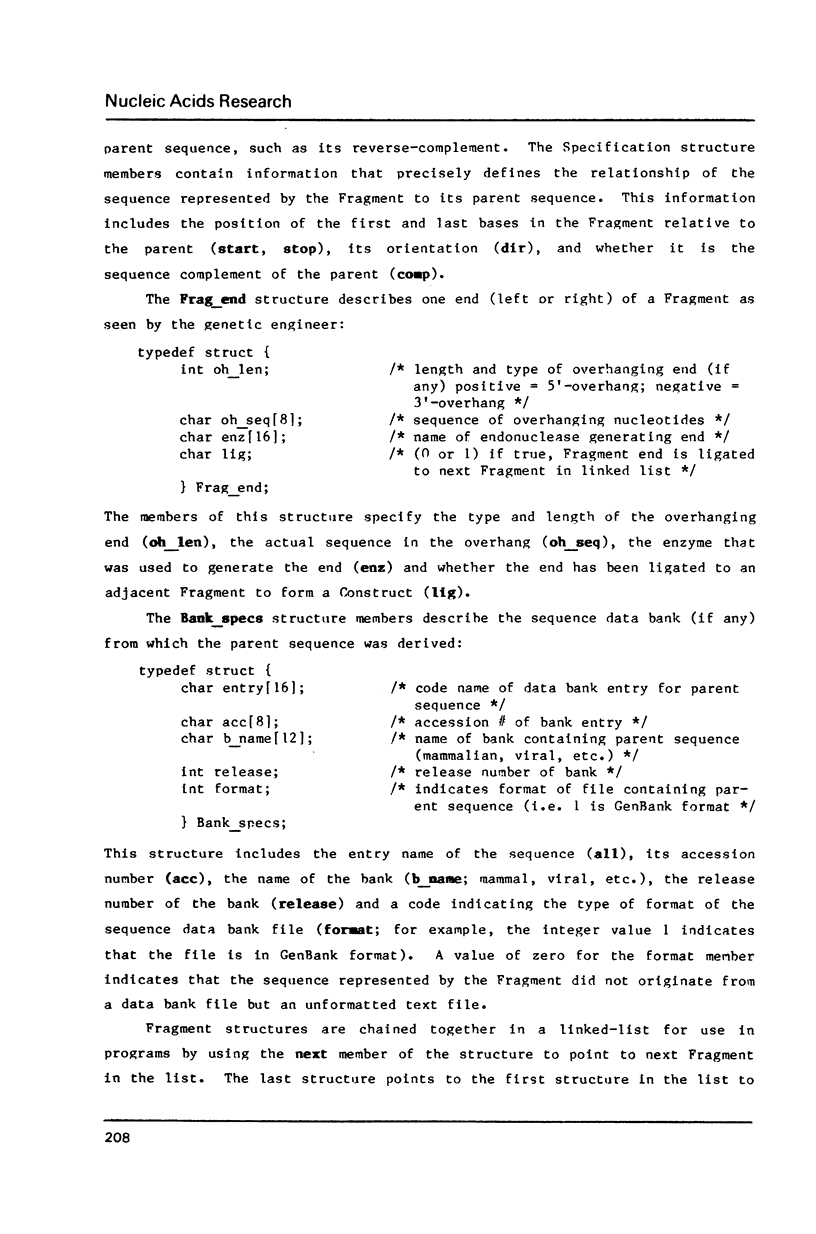
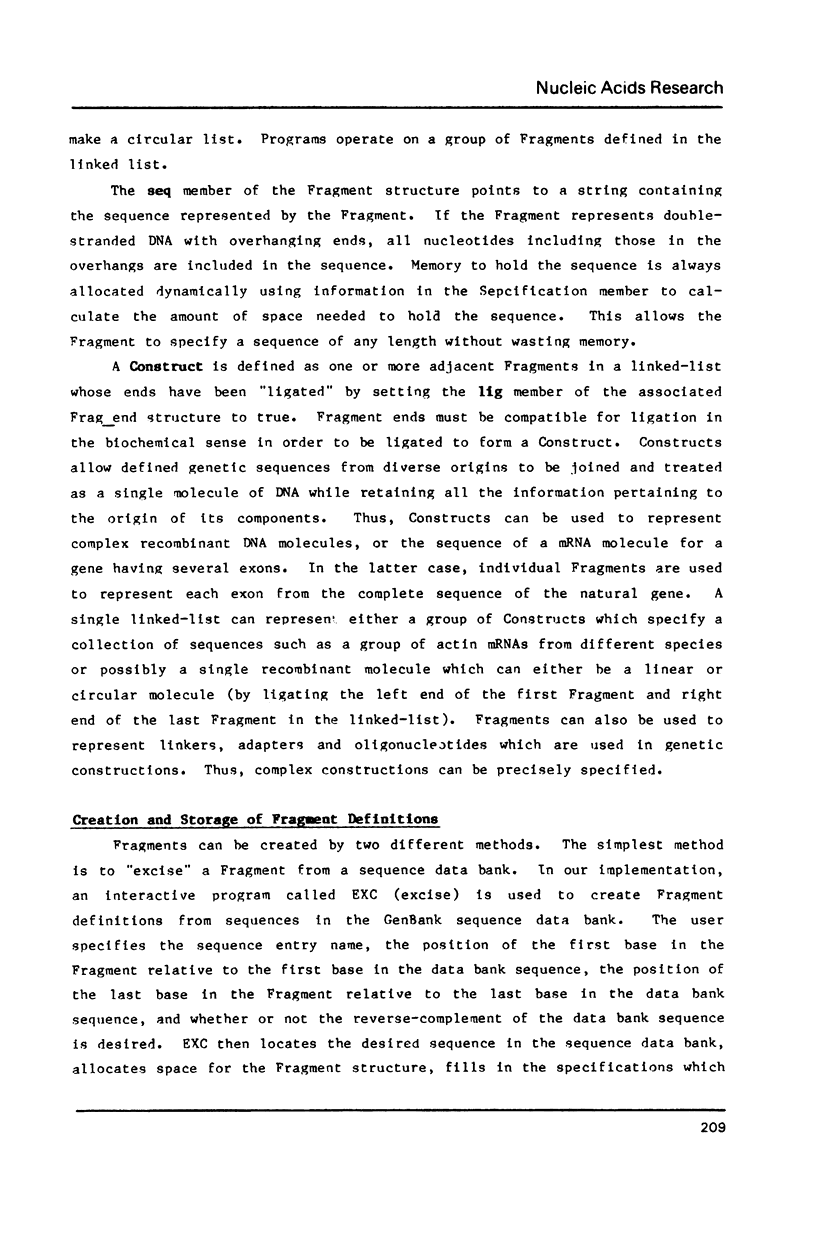
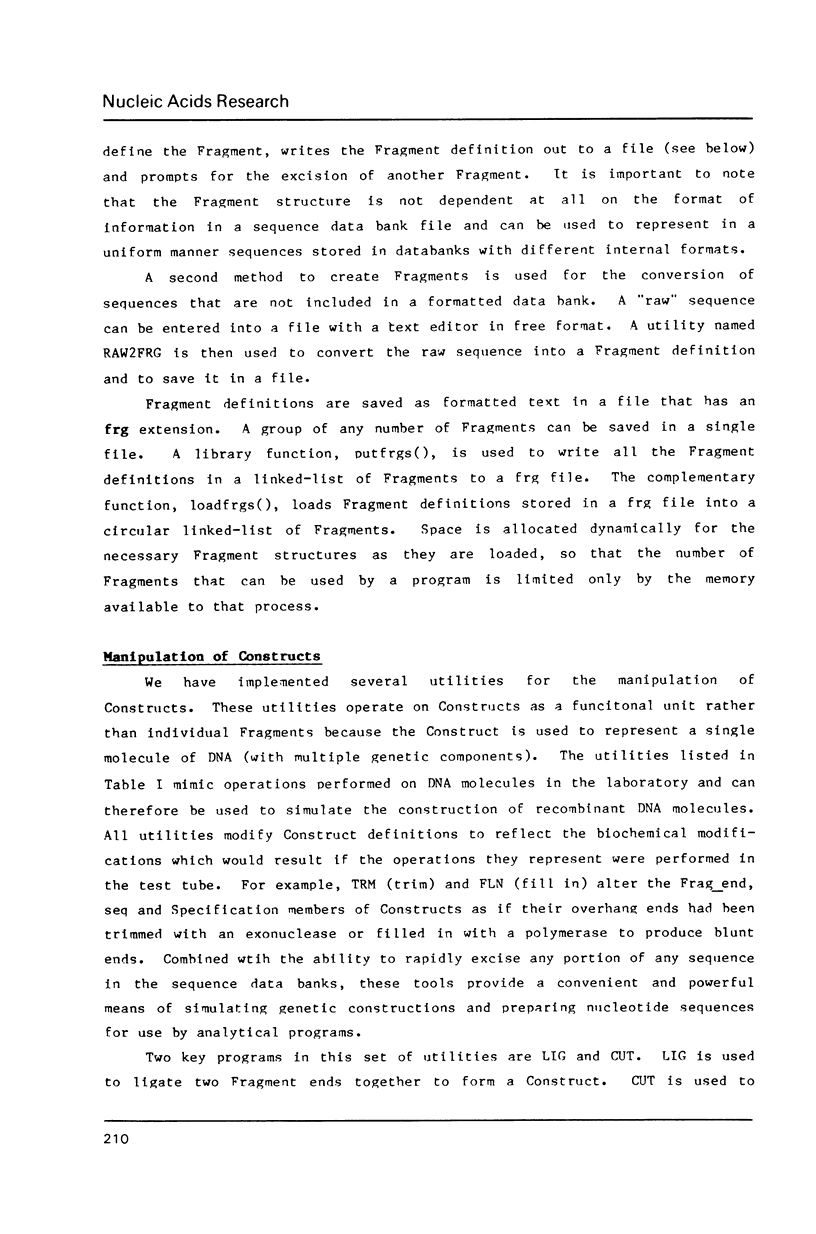
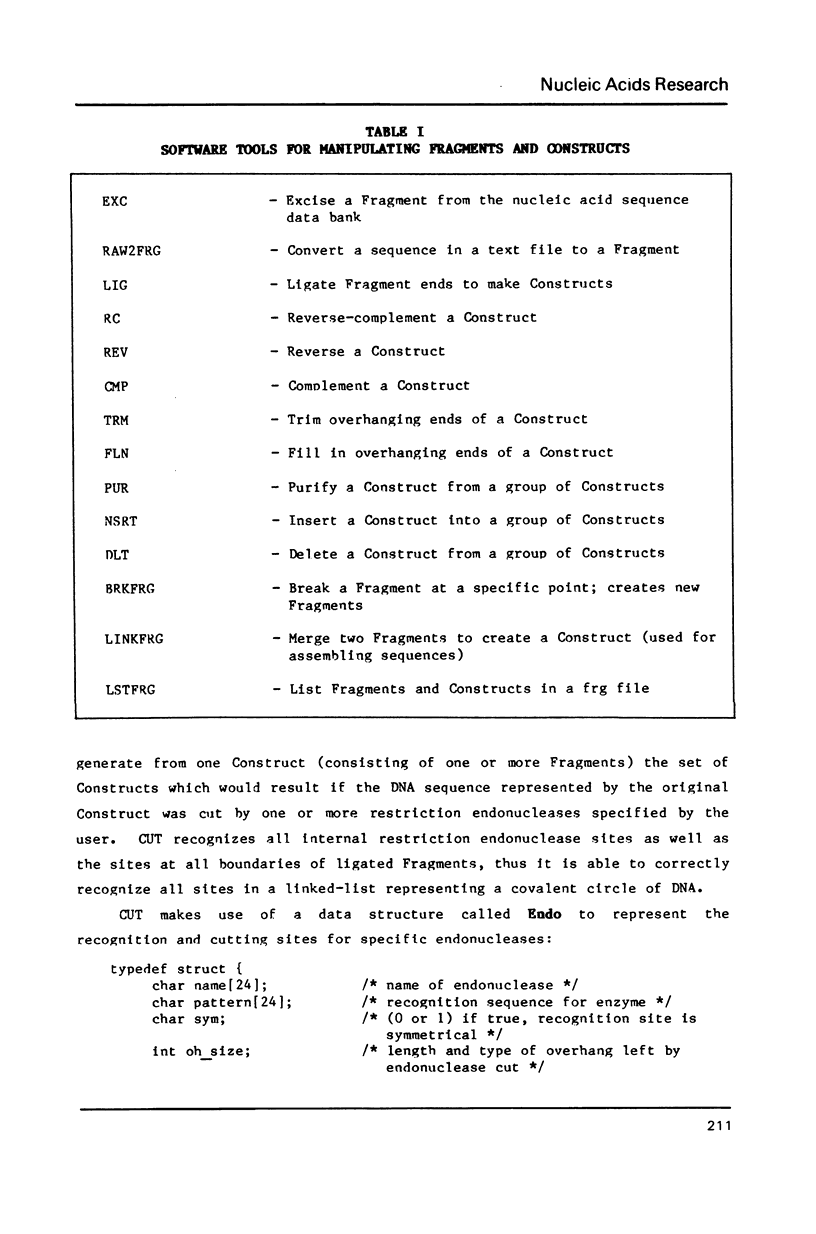
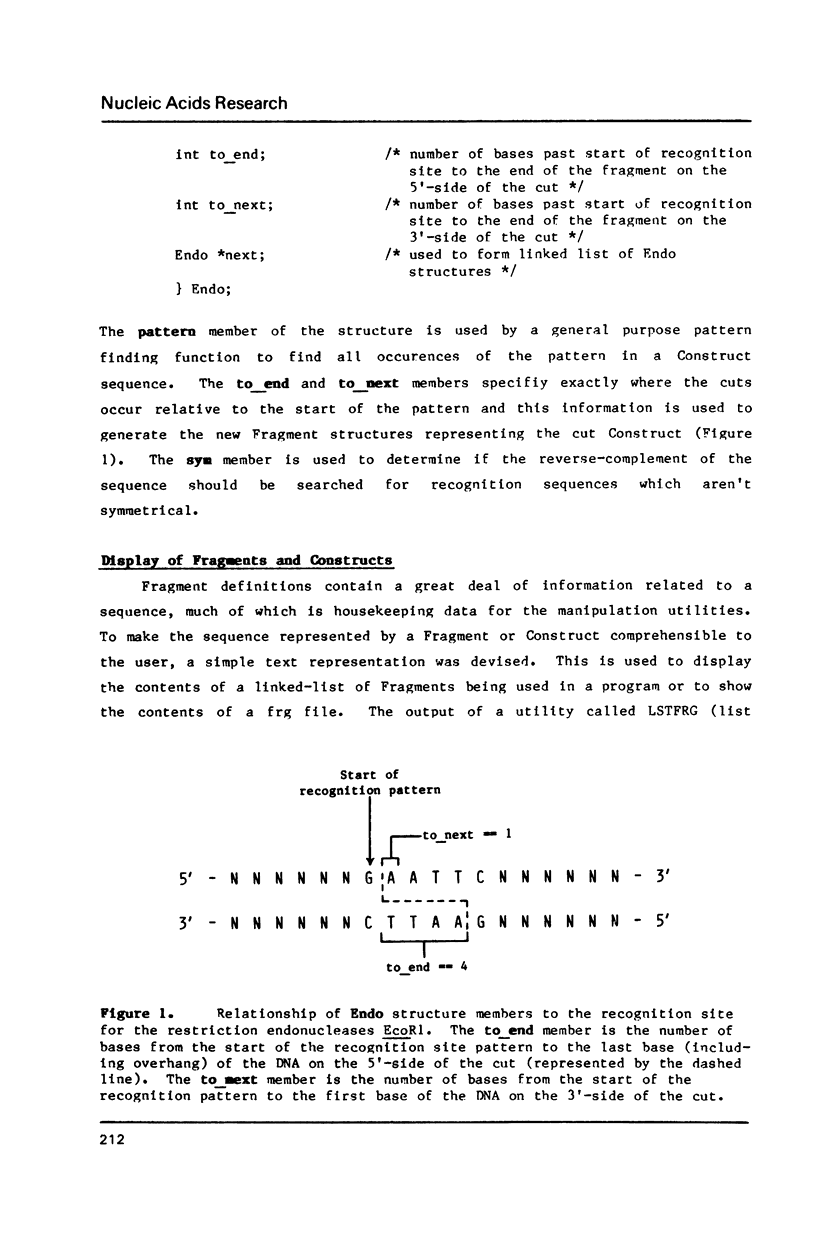
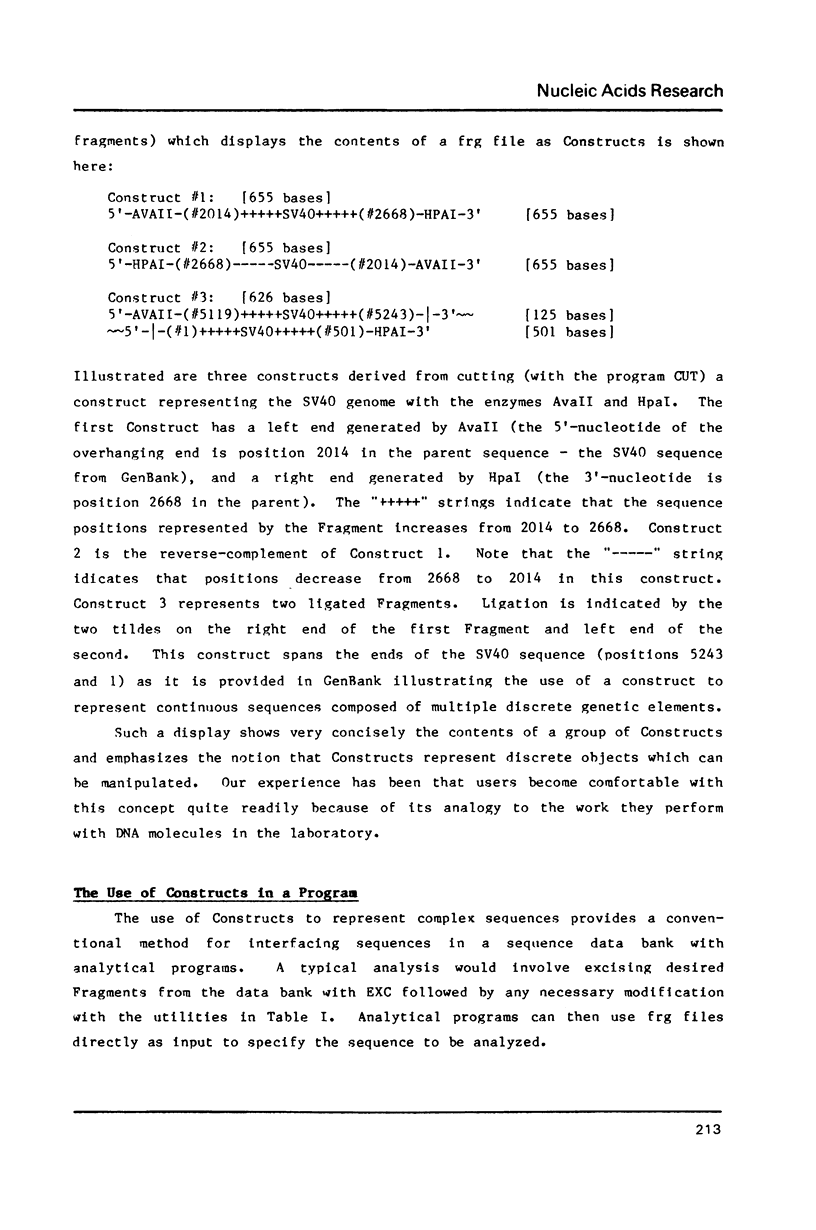
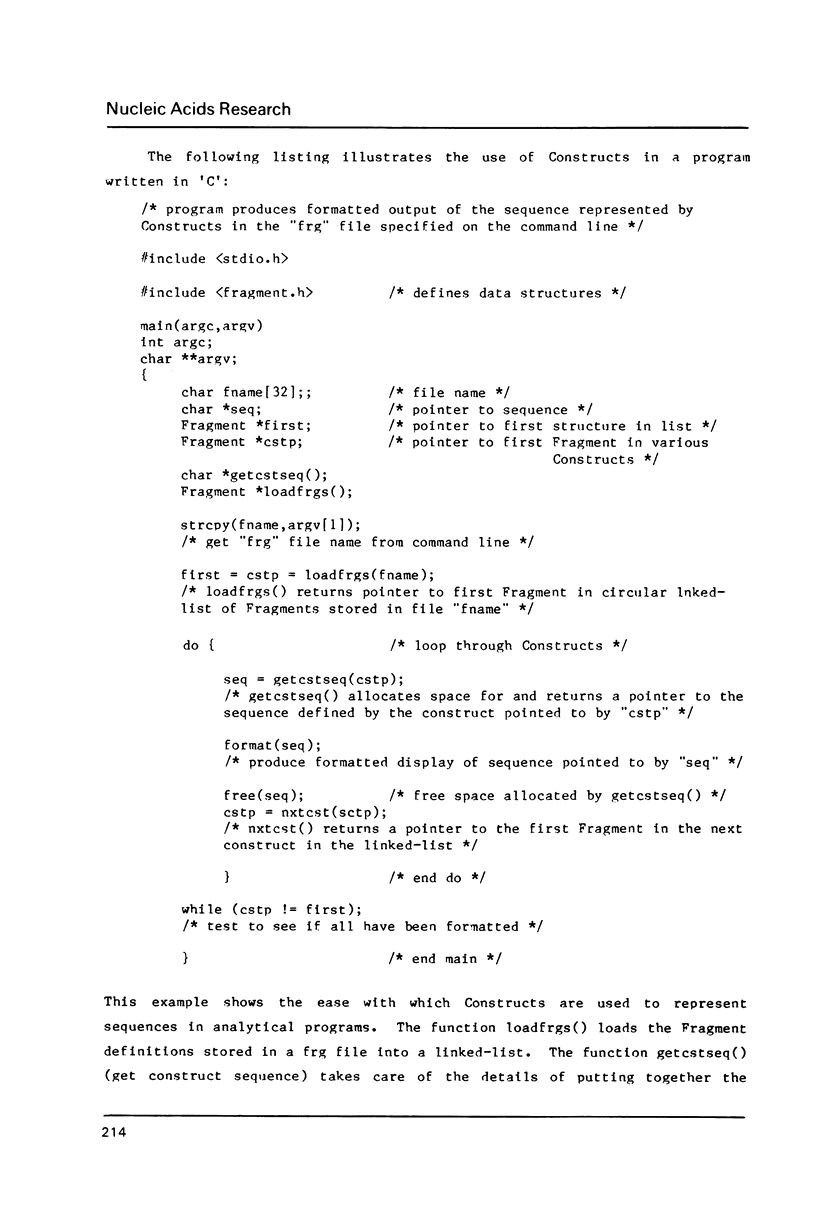
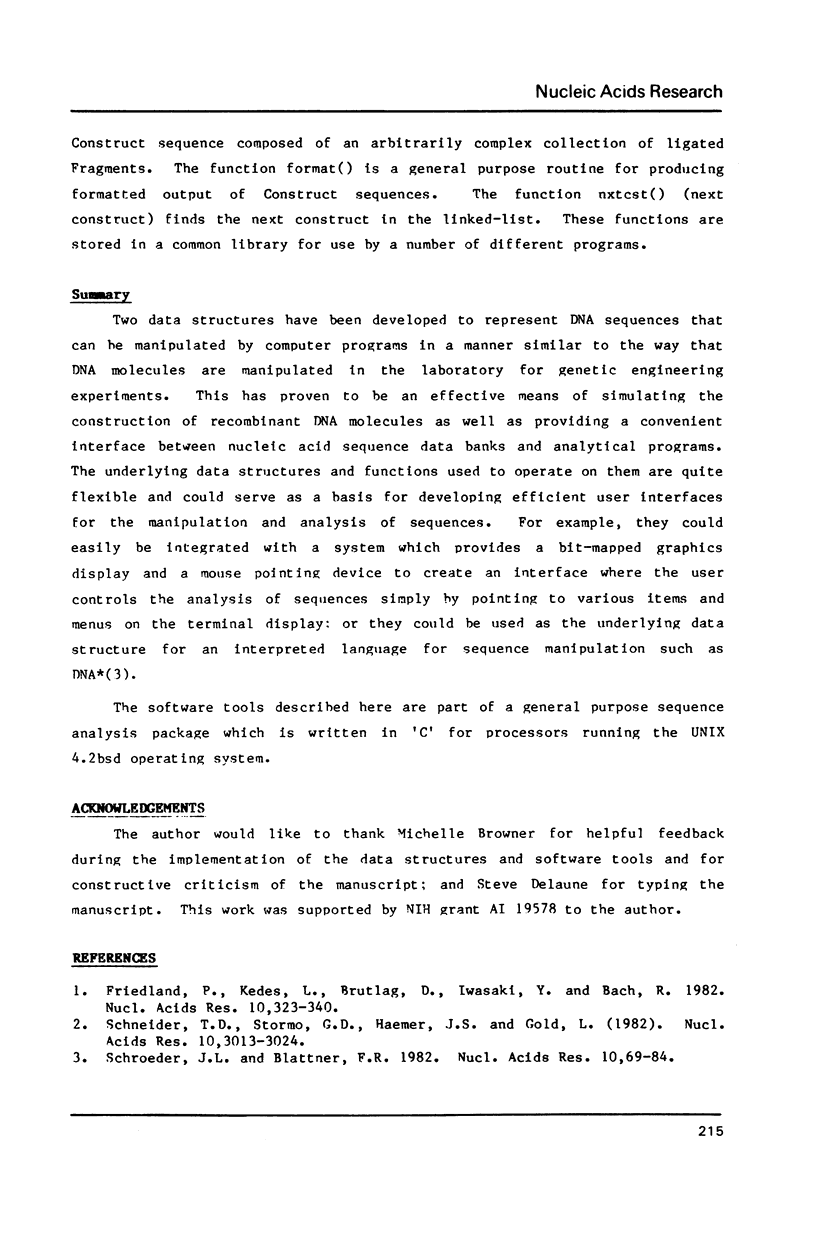
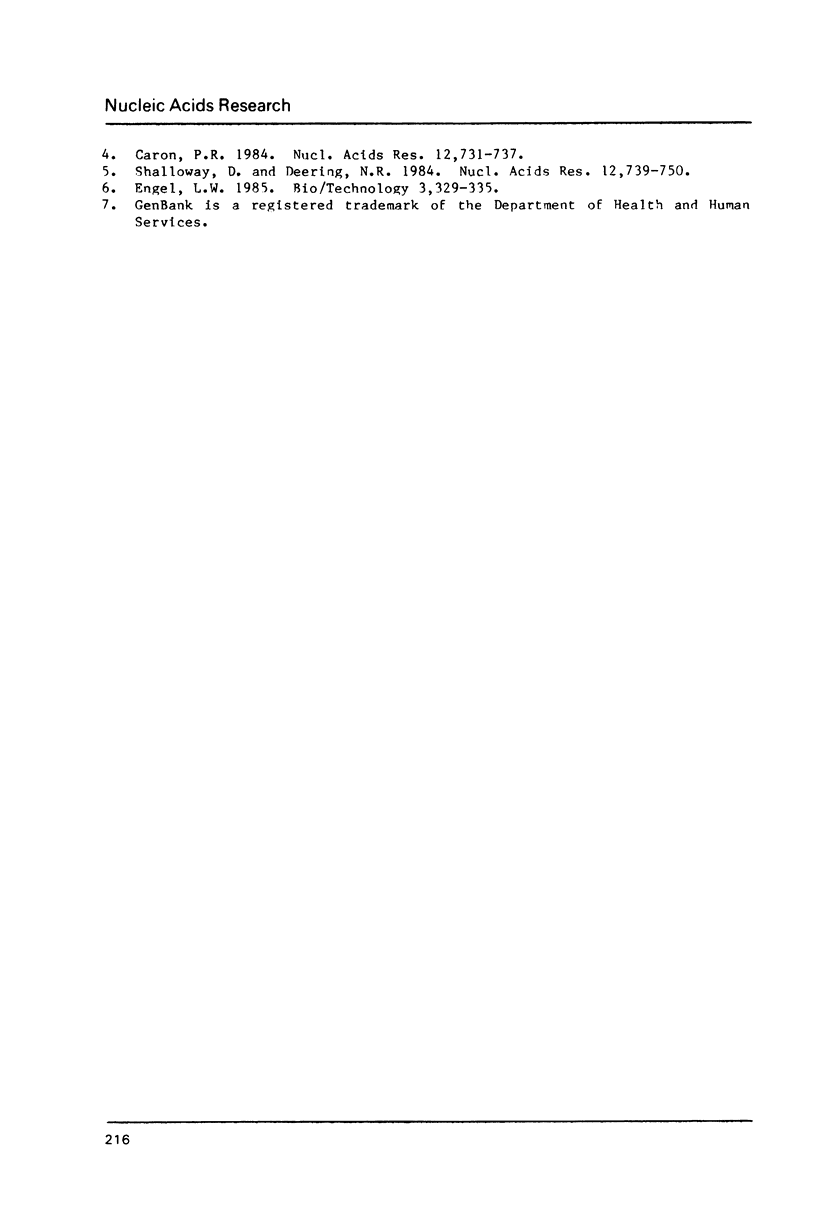
Selected References
These references are in PubMed. This may not be the complete list of references from this article.
- Caron P. R. KLONER; a computer program to simulate recombinant DNA strategies by restriction map manipulation. Nucleic Acids Res. 1984 Jan 11;12(1 Pt 2):731–737. doi: 10.1093/nar/12.1part2.731. [DOI] [PMC free article] [PubMed] [Google Scholar]
- Friedland P., Kedes L., Brutlag D., Iwasaki Y., Bach R. GENESIS, a knowledge-based genetic engineering simulation system for representation of genetic data and experiment planning. Nucleic Acids Res. 1982 Jan 11;10(1):323–340. doi: 10.1093/nar/10.1.323. [DOI] [PMC free article] [PubMed] [Google Scholar]
- Schneider T. D., Stormo G. D., Haemer J. S., Gold L. A design for computer nucleic-acid-sequence storage, retrieval, and manipulation. Nucleic Acids Res. 1982 May 11;10(9):3013–3024. doi: 10.1093/nar/10.9.3013. [DOI] [PMC free article] [PubMed] [Google Scholar]
- Schroeder J. L., Blattner F. R. Formal description of a DNA oriented computer language. Nucleic Acids Res. 1982 Jan 11;10(1):69–84. doi: 10.1093/nar/10.1.69. [DOI] [PMC free article] [PubMed] [Google Scholar]
- Shalloway D., Deering N. R. Recombinant DNA data management at the restriction and functional site level. Nucleic Acids Res. 1984 Jan 11;12(1 Pt 2):739–750. doi: 10.1093/nar/12.1part2.739. [DOI] [PMC free article] [PubMed] [Google Scholar]


